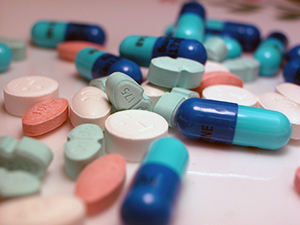
Trade in health products has increased substantially over the past 2 decades, and tariffs on health products have been lowered, making, for example, medicines more affordable for many. Indeed, Sustainable Development Goal (SDG) 3 calls upon countries to ensure healthy lives and to promote well-being for all ages. Yet in several developing countries, substantial tariffs still persist, inflating the prices of health products. The most direct and immediate contribution of the trade community toward achieving SDG 3 could be to open up trade unilaterally or to negotiate a plurilateral trade agreement, which would guarantee free market access for health products, like much-needed medicines.
Health products encompass all goods that directly enter the health sector. Helble (2012) identified 207 health products, grouping them into six categories: (i) dosed medicines, (ii) bulk medicines, (iii) input specific to the pharmaceutical industry, (iv) chemical inputs of general purpose, (v) hospital and laboratory inputs, and (vi) medical technology and equipment.
In a new ADBI working paper, Helble and Shepherd (2017) analyze the trade and tariff structures of these health products across the globe, noting that international trade in health products has increased threefold between 2002 and 2014 without almost no sign of a slowdown. Furthermore, the authors find that the Most-Favoured Nation tariffs on health products have fallen in recent years, to below 5% in all regions except for South Asia.
Applied Most-Favoured Nation Tariff on Health Products by Region, 2002, 2008, and 2014

However, looking only at regional averages obscures the fact that in some countries, tariffs on health products are significant. For example, in South Asia, Pakistan still levies 12% at the border, followed by India with 10% and the Lao People’s Democratic Republic with 8%. In combination with these tariffs, health products can be subject to a wide range of nontariff measures, resulting in high prices and reduced availability—hardly an ideal situation for promoting sustainable development. Thus, Helble and Shepard argue that trade has a clear role to play in bringing the poor key products for treatment and prevention of common sicknesses at the lowest possible cost.
In the area of climate change, there have been efforts to liberalize trade in environmental goods under the framework of a plurilateral agreement. In such a sector agreement, the main traders of a particular group of goods, such as those for information technology or environment, start negotiations to fully (or almost fully) liberalize trade in that sector, without waiting for liberalization of other sectors. Although such efforts stalled at the WTO for environmental goods, APEC was successful in establishing a product list among its member economies, and work is ongoing to free up trade in these products.
The negotiations can be complex, as, for example, a common definition of health products is needed. The global commitment to sustainable development suggests that countries should come together to agree on a list of “health products” for priority liberalization. Al though such a list may not be comprehensive, it could still reduce health care costs for health systems, particularly patients, around the world.
It must also be noted that countries do not need to wait for such regional or plurilateral initiatives to lower their tariffs on health products. Reducing tariffs unilaterally is the most effective and direct tool to bring down the costs of health products.
Finally, a word of caution. Countries need to ensure that the lower tariffs effectively translate into lower prices. In most countries, the procurement of medicines and other health products is complex, involving various public and private actors. The final price paid by the health care facility or patient may differ considerably from the imported price. Reducing tariffs and other nontariff barriers at borders is the first step to bring prices down. However, a careful examination of the entire supply chain behind the border is needed to ensure that health products are sold at the lowest, yet market-based, price.
_____
References:
Helble, M. 2012. More Trade for Better Health? International Trade and Tariffs on Health Products. WTO Staff Working Paper. ERSD-2012-17. Geneva: World Trade Organization.








Comments are closed.